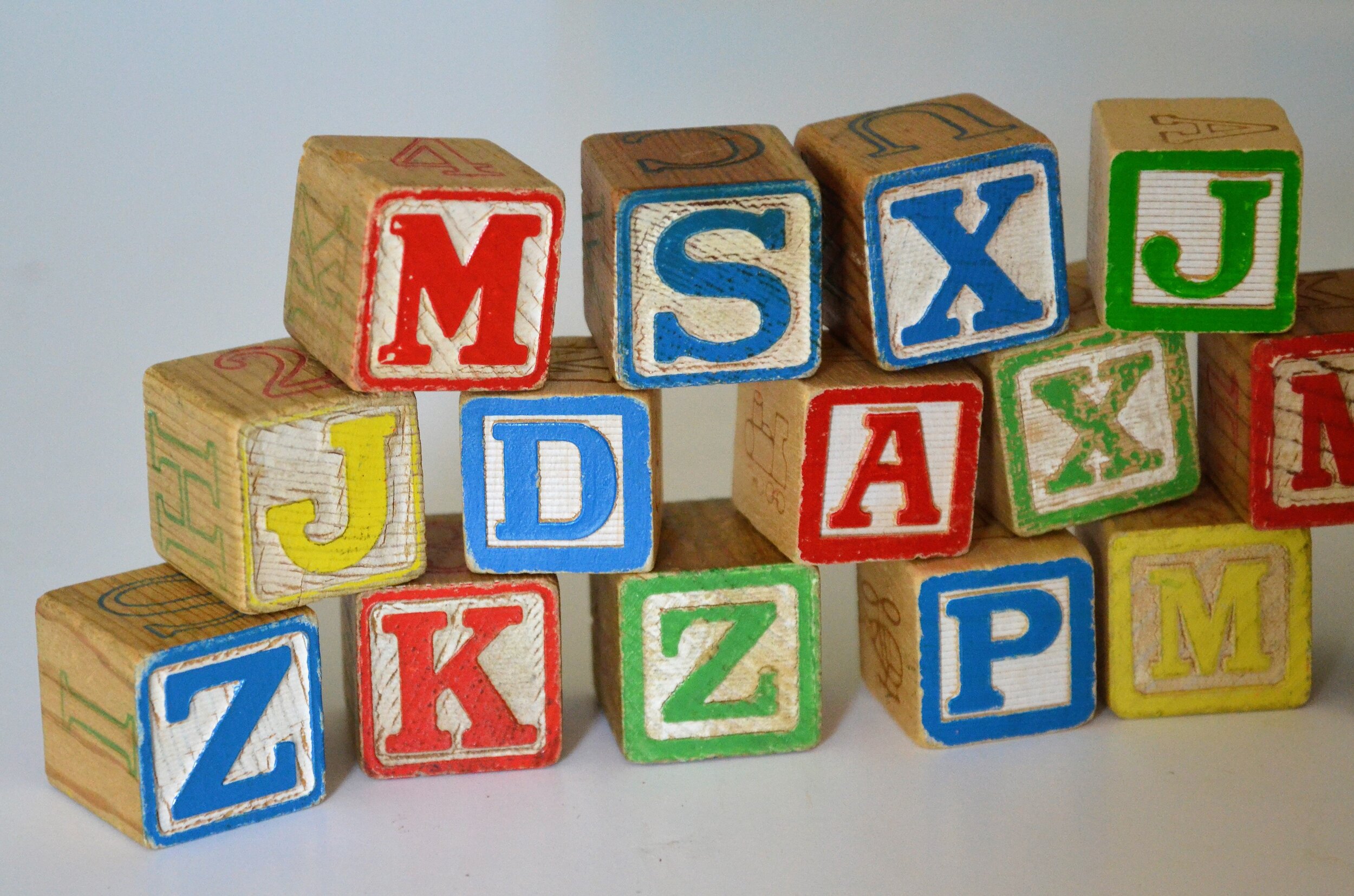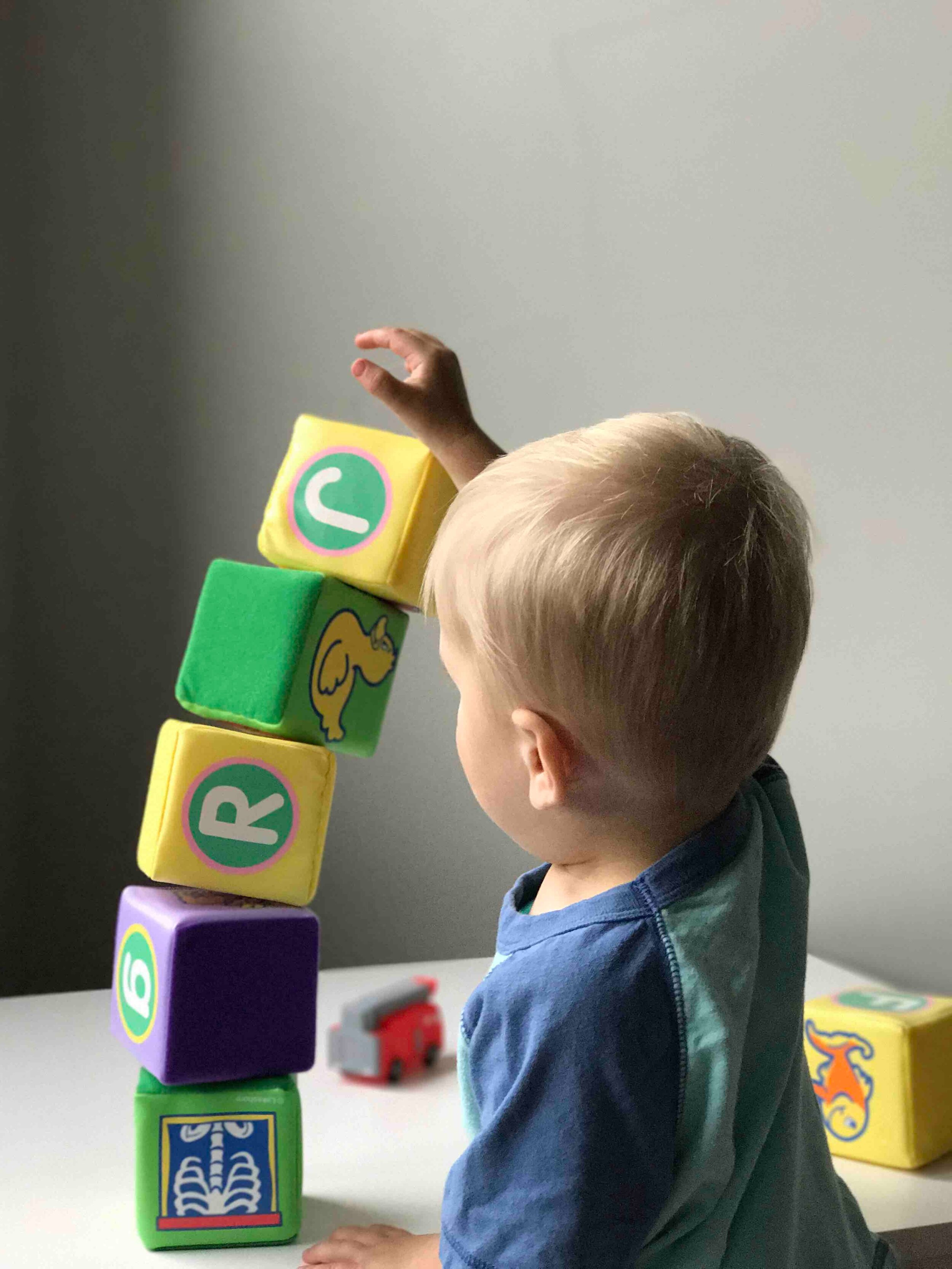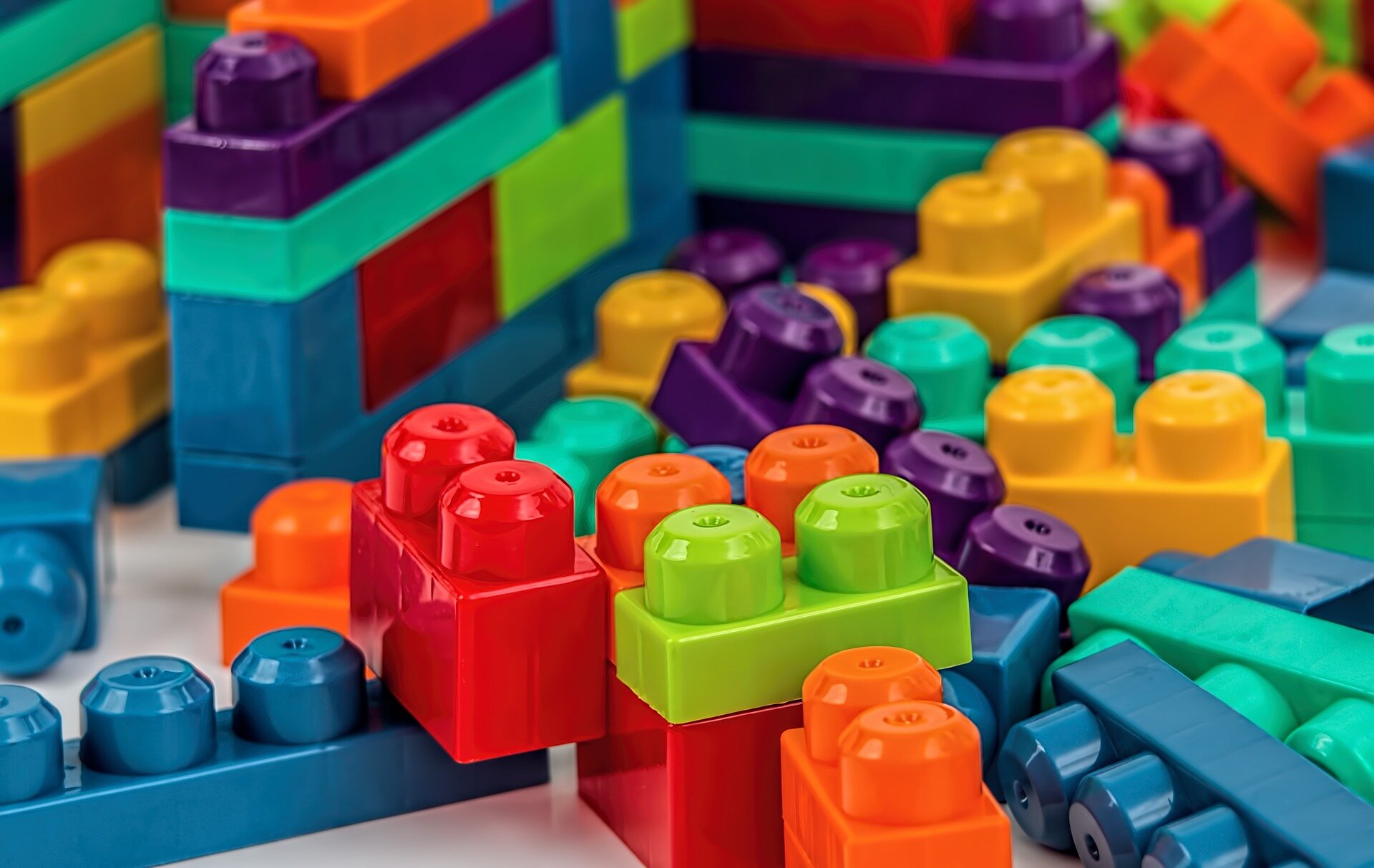Playing with Blocks Builds Learning: Block Play Impacts a Child’s Development
Playing with Blocks Builds Learning: Block Play Impacts a Child’s Developmental Skills
Judy Benz Duncan, Occupational Therapist
TheraPlay4Kids.com
It is almost like a rite of passage for a child to have a pile of blocks somewhere in their toy chest or play area. Blocks, blocks, and more blocks can be wooden, plastic, soft stuffed, on picture cards, as decorative imprints on clothing, and well, just about everywhere!
Play blocks are a very basic early learning toy that may start out for a baby as something that is easy to grab and stick in their mouth. However, as the child grows and develops, a block, when combined with other blocks, turn into a learning experience that helps build other important developmental skills.
TheraPlay4Kids.com
There is absolutely no wrong or right way to play with blocks, or even what the definition of what a block may be! Every child is unique in the way that they choose to play with and learn from this “toy,” making blocks a valuable tool to encourage open ended play and learning. This is one toy that's been around for centuries, and is definitely something your child should have in their toy box or play area.
Read on for how to use blocks for learning, as well as an extensive list of activities!
Playing with Blocks Builds Learning
TheraPlay4Kids.com
Building with blocks provides one of the most valuable learning experiences available for young children. Block play stimulates and promotes learning in all domains of a child’s development which includes intellectual, physical, social-emotional and communication-language.
Benefits of playing with building blocks include:
TheraPlay4Kids.com
o Imagination – Block play gives children the freedom to follow their own ideas through pretend play as well as through individual or shared creative play.
o Self-expression – Children are able to express themselves through their play, creations and discoveries. There is no wrong way to play, combine, or build with blocks! Because the block shapes do not represent a specific object, children have the freedom to create structures, settings, and stories from the blocks. Block play can be a starting point for expressing their thoughts, ideas, and making their own pretend play stories to share with others.
o Math Skills and Problem Solving – Due to the many shapes, sizes and colors that are available, blocks offer ample opportunity for children to practice early important math skills, such as counting, sorting, estimating, comparing shapes and sizes, creating patterns by color or number, just to name a few learning opportunities through block play.
o Physical Motor and Growth Development – Block play promotes the development of spatial awareness, core support and balance, as well as developing hand-eye coordination, gross to fine motor skills, as children reach for, lift, move and build with blocks, strengthening their fingers, hands and arms.
o Creativity – Blocks are loose parts, allowing children the freedom to combine and recombine them in any countless number of ways. Adding additional play materials and media, such as play logs, playdough, parquetry pieces, Legos, or small play people and animals gives them even further opportunity for creativity.
TheraPlay4Kids.com
o Science –Playing with blocks help them to become familiar with balance, weight, spatial awareness or gravity, and pretend play out any ideas through their experimentation. After they figure out the properties of the blocks (size, weight, shape, and stability level), they will move on from stacking blocks to building cities complete with roadways, tunnels, and bridges.
o Self-Esteem – Children can take risks in their block play, helping them to discover that they have independent ideas, can create, build, and develop something totally unique and “all theirs
o Communication & Pretend Play: using blocks can support story creation and collaborative storytelling.
o Learning Consequences or Cause & Effect – What goes up can also come down – literally! Children learn not only how to stack a block tower, but they can also see what happens when they fall. They will learn the consequences of their play actions from building to destruction in a totally appropriate play setting.
Some Block Play Ideas and Activities:
TheraPlay4Kids.com
o Sponge blocks: Good for even very young toddlers, a selection of different-sized kitchen or cleaning sponges are great for stacking. Only use clean sponges without any residue of soap or cleaning solutions. Use in the bathtub for stacking heavy sponges (as opposed to dry ones) for a different sensory experience.
o Shoe-box, oatmeal, and other sized/shaped cardboard containers: Tape lids closed on a variety of empty, clean boxes. Children can decorate plain boxes with markers, paints, or crayons if they would like. Your home-made boxes can be covered with adhesive contact paper for a matching set, or using different patterns, make a variety of block sets for matching, sorting, and just more fun!
o Big blocks: Shipping boxes, from dishes to appliance boxes, offer opportunities for large scale building. These big giant blocks are great for backyard block play.
o Milk or juice carton boxes: These boxes can be cleaned thoroughly, stuffed with newspaper, and taped flat to close. These make great big, easy to handle and stack early blocks. Your child can decorate or you can cover with adhesive contact paper to make them more fun and attractive.
o Block Prop Play: Add props your child can use for building play, including cars and trucks of different sizes, road signs, sticks for making trees in balls of play-dough, plastic plants, road carpets, masking tape to make lines, figurines and people, boxes for garages, and really, anything goes!
o Build a Wall: Use play-dough for some brick-laying fun! Smoosh the play-dough between the blocks to build a structure.
TheraPlay4Kids.com
o Block Stamping: Use finger paints or kid-safe washable paints to stamp a row, or follow a drawn pattern of blocks across the paper; see if they can fill in a drawn shape by stamping the block shapes.
o Stack empty plastic containers: Collect empty, clean plastic tubs of all sizes. Snap lids on for building. These are fun blocks for bath time, too. The kids can stack them, fill with water to weigh them down, or just see if they can stack on a floating block.
o Block Copy – start with a simple design of two blocks, having your child try to duplicate what you make – as they gain skill, make the design go from a simple stacked tower to a line, to a wall, to a bridge, etc.
o Paper Bag Blocks: Fill paper bags from the grocery, or paper lunch bags, with newspaper, fold opening to close, tape shut. Shape sides so they are as flat as possible for easier stacking. Your child can help throughout the entire process.
o Styrofoam Shipping Forms: Unique shapes of shipping/packing forms encourage children to come up with intriguing designs of their own. They are light, soft, and easy to handle.
o Block Roads, Train Tracks, and Tunnels: Provide blocks to create roads or train tracks for miniature cars or trains. Cut round cereal and hat boxes in half to create tunnels for them to travel through.
TheraPlay4Kids.com
o Tall Towers: Children stack blocks as tall as they are. How many blocks does it take? How many 1” blocks? How many 4” blocks? How many shoe boxes does it take? Measure using different sized blocks and forms.
o Name It – Claim It: Ask / help your child to write their initials or first name using blocks instead of paper and pencil. Stretch their “block name” out across the whole room.
o Tower Knock Over: After your child builds a tower, have then toss bean bags at it to see how many they can knock over with one throw; Or roll a small to mid-sized play ball at the tower to see if they can knock all the blocks (and tower) down. You can even use a colorful assortment of plastic cups as light, easy, blocks that are easy to knock down!
o Block Maze: If you have a pet mouse, hamster, or guinea pig, children can build a block maze for their pet to play in. Make sure kids are way past the stage of throwing blocks and can safely and appropriate play with their pets.
o Stuffed Animal Houses: Have children build block homes to fit different-sized stuffed animals.
o Ramp It: Create a variety of ramps with blocks. Roll a small ball down the ramps. Which block/ramp incline makes the ball roll slower or faster?
TheraPlay4Kids.com
o Making Patterns: Provide blocks of different shapes or colors. Create a pattern for children to repeat, such as square, rectangle, square, rectangle. Or red, blue, red, blue. Ask children to create new patterns for you to repeat.
o Seek and Search for a Block: Place a variety of blocks in the middle of the floor. Encourage children’s observation skills by describing blocks for them to find. Use characteristics that help children focus on shape, color, or size.
o Block Measures: Add a basket of measuring tools like tape measures, rulers, pencils for marking etc.
o Pretend Play Block Play: Provide play props like kitchen utensils, material, saucepans, tins, recycled plastic containers, felt pieces, handbags, small baskets, shoe boxes, cardboard tubes, plastic cups and bowls, play animals, etc.
o What other ways can you come up with during block play?
Block Play Rules:
TheraPlay4Kids.com
Let’s all be safe! Here are some general “rules” to keep block play fun for everyone involved.
o Start with soft blocks, especially if your child like to throw items! Once they are able to play appropriately then start moving up to cardboard, plastic, or wooden blocks
o It’s cool to knock their tower down, but when play time is done, have a block storage container, basket, bag, or set place where all the blocks go until the next time; Clean-up is part of playtime!
o No stacking blocks in a tower taller than their head. Why? Building higher towers may encourage them to stand on a chair or table which could cause a fall and injury through loss of balance or from trying to reach and catch falling blocks.
o No block throwing! If they want to throw, then block playtime is over.
o If they want to knock down or tear apart their own creations, that is just fine – but teach them to respect the work of others, and let them know that someone else’s work is not for them to tear down without permission.
o If they are not finished with their creation, or want to continue work on it later, it’s cool to let “it stand” for now, but not forever. Take a picture to save so they can keep their creation that way.
TheraPlay4Kids.com
Please Share with credit to TheraPlay4Kids.com
Thanks for your support of this site!
TheraPlay4Kids.com












